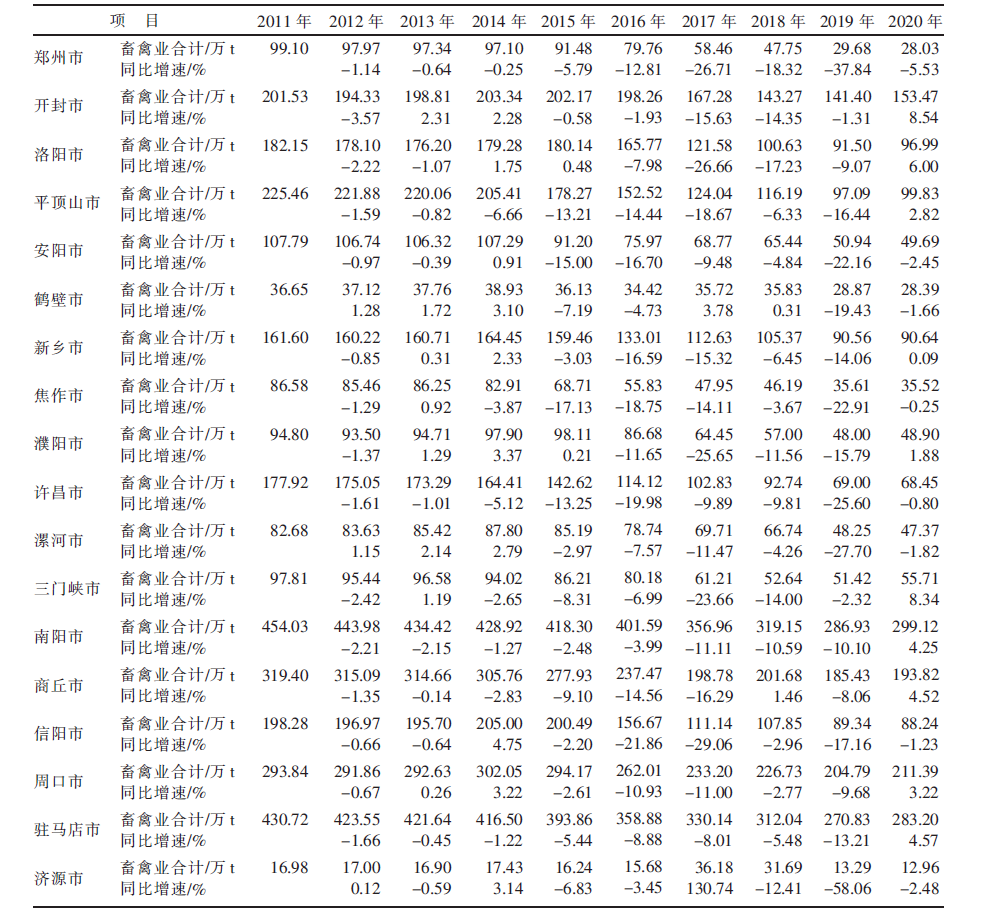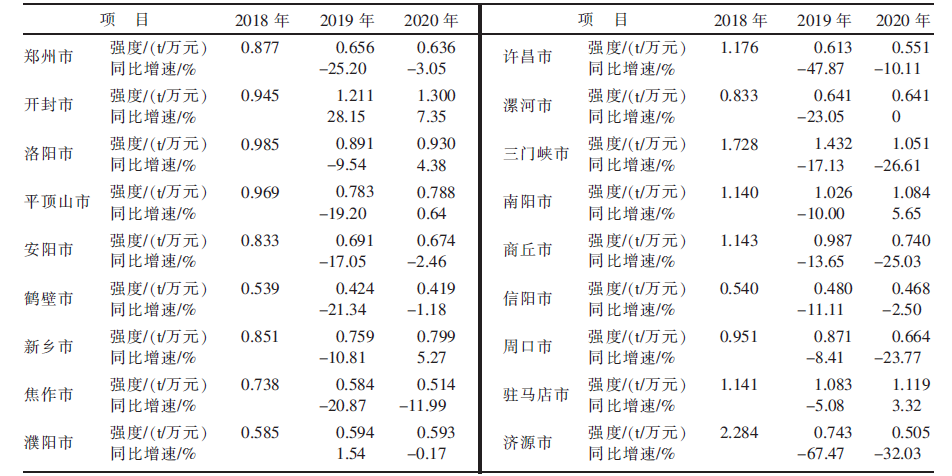畜牧与饲料科学 ›› 2023, Vol. 44 ›› Issue (4): 61-69.doi: 10.12160/j.issn.1672-5190.2023.04.009
畜禽业碳排放的时空特征及减排路径——以河南省为例
孔祥飞1,张东生2
- 1.中国社会科学院大学应用经济学院,北京 100032
2.烟台大学经济管理学院,山东 烟台 264005
Spatial-temporal Characteristics of Carbon Emissions from Livestock and Poultry Industry and Emission Reduction Paths: A Case Study of Henan Province
KONG Xiangfei1,ZHANG Dongsheng2
- 1. Faculty of Applied Economics,University of Chinese Academy of Social Sciences,Beijing 100032,China
2. School of Economics and Management,Yantai University,Yantai 264005,China
摘要:
[目的]分析河南省畜禽业碳排放时空特征及减排路径,为加快该省畜禽业高质量发展提供参考。[方法]以河南省畜禽业碳排放为研究对象,基于全省及各地区(17个地级市和1个省直辖县级市)2011—2020年的牛、马、驴、骡、猪、羊、家禽的出栏头数或只数、畜禽业产值数据,以各类畜禽的肠胃、排泄物产生的CH4与N2O为温室气体来源,采用畜禽业碳排放因子法与强度计算公式,分析河南省及各地区畜禽业碳排放总当量及强度的时空特征。[结果]就碳排放总当量而言,河南省畜禽业及其各结构碳排放当量2011—2020年整体呈下降趋势;就碳排放总当量的同比增速而言,河南省畜禽业碳排放绝对当量经历了3个具有不同波动特征的阶段:小幅度增加阶段、大幅度下降阶段、波动变化阶段;依据畜禽业碳排放绝对当量特征,可将河南省各地区划分为“高-波动”“中-波动”“中-下降”“低-波动”“低-下降”5种类型。就碳排放强度绝对当量而言,河南省畜禽业碳排放强度2011—2020年整体呈下降趋势,畜禽业经济发展的质量大幅度提高;就碳排放强度同比增速而言,河南省畜禽业碳排放强度经历了波动下降的过程,这一过程分为2个阶段:波动性下降阶段、波动性上升阶段;依据畜禽业碳排放强度特征,可将河南省各地区划分为“高-收敛型增长”“高-波动”“高-扩张型下降”“中-波动”“中-扩张型下降”“中-收敛型下降”“低-波动”“低-收敛型下降”8种类型。[结论]河南省畜禽业碳减排在数量与质量两个层面上取得了一定成效;畜禽业碳减排成果具有不稳定性特征;畜禽业碳排放总当量与强度具有地区异质性特征。建议河南省通过以下路径实现畜禽业现代化发展:加强畜禽粪污综合利用;加大畜禽业碳减排科学技术投入与应用力度;优化畜禽管理方式;多政策协同推进温室气体减量化;推进畜禽业全产业链融合发展。
中图分类号:








